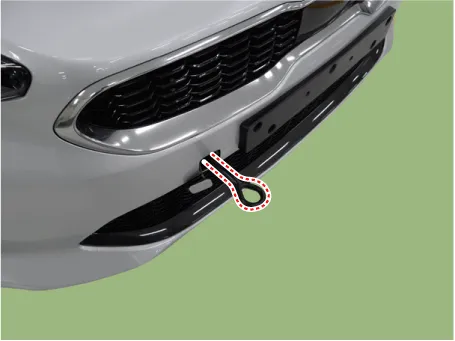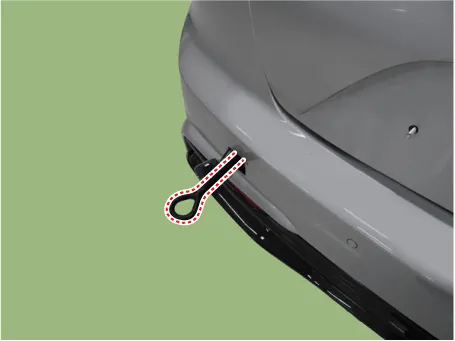Kia Stinger CK: General Information / Towing
General information
| Towing |
If the vehicle needs to be towed, call a professional towing service. Never tow a vehicle just on a rope or chain as this is extremely dangerous.
[Front]

[Rear]

Emergency Towing
There are three popular methods of towing a vehicle:
| – |
Flatbed: The operator loads the vehicle on the back of a truck. This is the best way of transporting a vehicle. |
| – |
Wheel-lift: The tow truck uses two pivoting arms that go under the tires of the driving axle and lift them off the ground. The other two wheels remain on the ground. |
| – |
Hook and Chain: The tow truck uses metal cables with hooks on the ends. These hooks go around parts of the frame or suspension, and the cables lift that end of the vehicle off the ground. The vehicle's suspension and body can be seriously damaged if this method of towing is attempted. |
If the vehicle cannot be transported by flat-bed, it should be towed with the wheels of the driving axle off the ground and perform the following:
Manual Transaxle
| • |
Release the parking brake. |
| • |
Shift the Transaxle to neutral |
Automatic Transaxle
| • |
Release the parking brake. |
| • |
Start the engine. |
| • |
Shift to [D] position, then [N] position. |
| • |
Turn off the engine. |
|
Other information:
Kia Stinger (CK) 2018-2023 Service Manual: Rear Cross Member
Repair procedures Removal 1. Remove wheel nuts, wheel and tire (A) from hub. Tightening torque: 107.9 - 127.5 N·m (11.0 - 13.0 kgf·m, 79.6 - 94.0 lb·ft) Be careful not to damage the wheel bolts when removing the wheel and tire (A).Kia Stinger (CK) 2018-2023 Service Manual: Scheduled maintenance service
Follow the Normal Maintenance Schedule if the vehicle is usually operated where none of the following conditions apply. If any of the following conditions apply, follow the Maintenance Under Severe Usage Conditions. Repeated driving short distance of less than 8 km (5 miles) in normal temperature or less than 16 km (10 miles) in freezing temperature Extensive engine idling or low speed driving for long distances Driving on rough, dusty, muddy, unpaved, graveled or salt-spread roadCategories
- Manuals Home
- Kia Stinger Owners Manual
- Kia Stinger Service Manual
- New on site
- Most important about car



